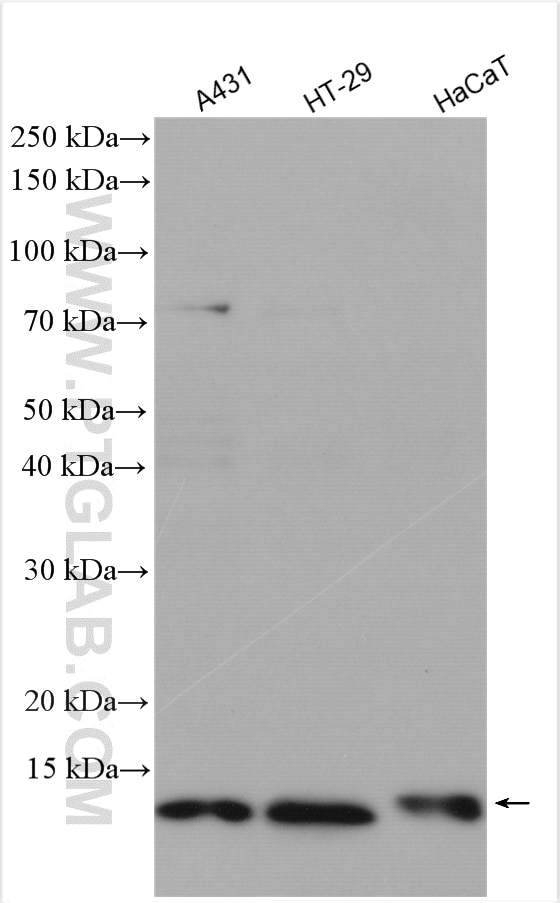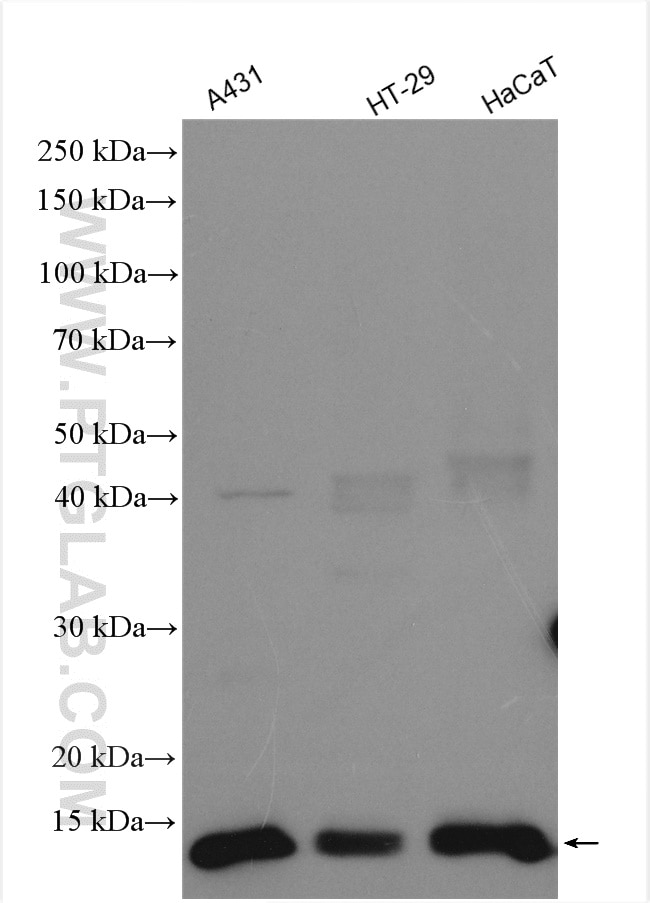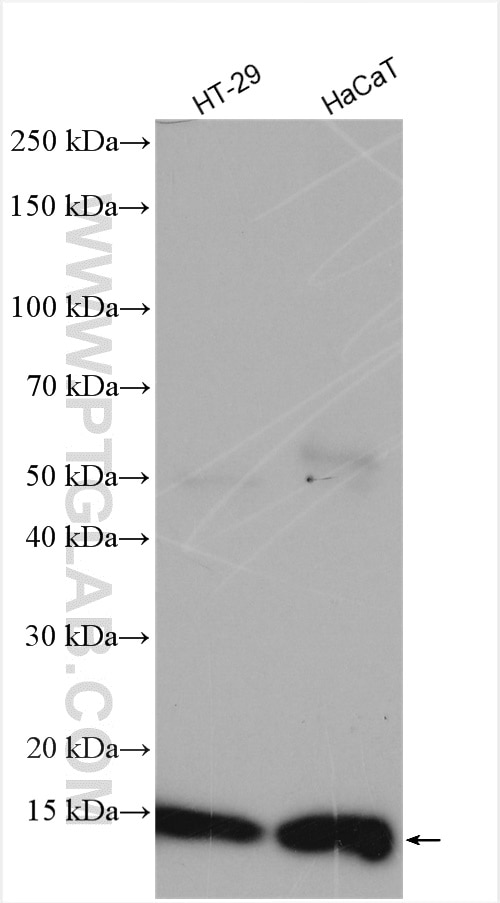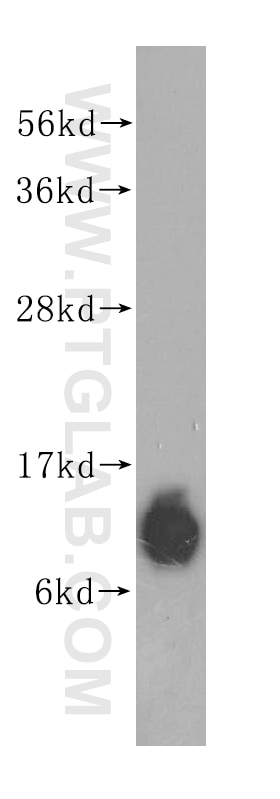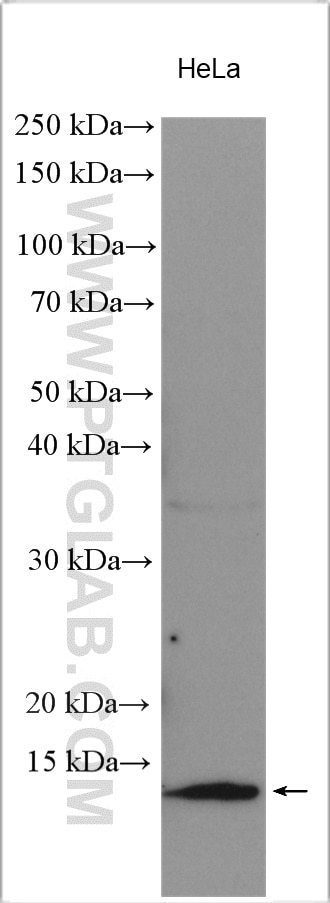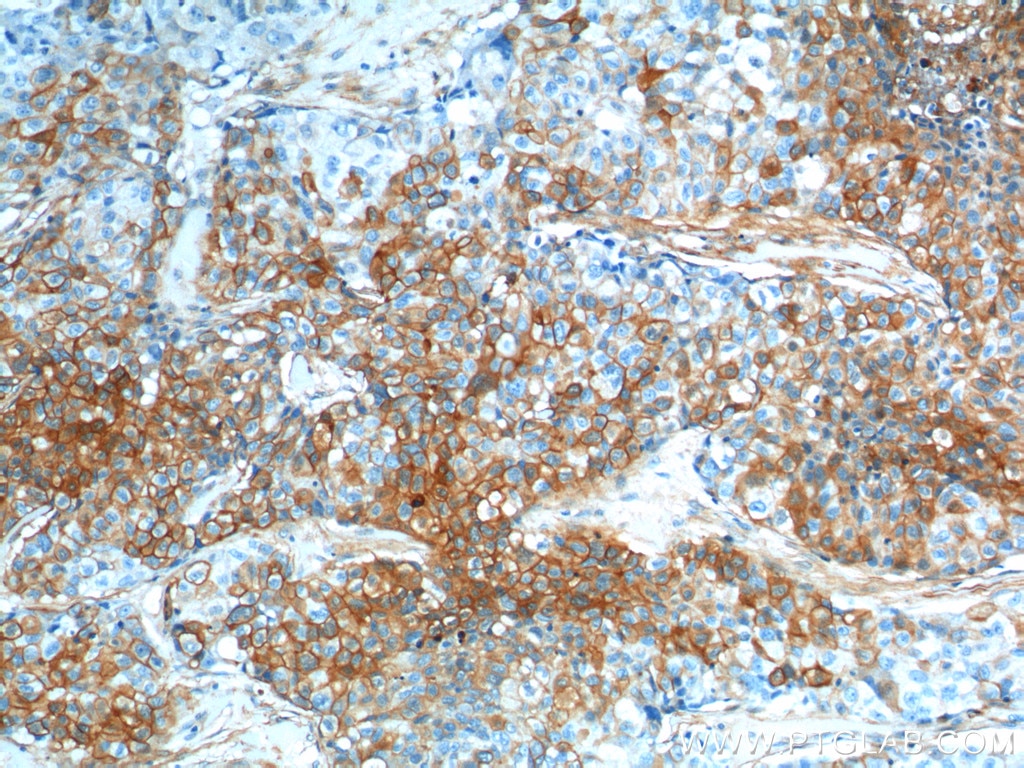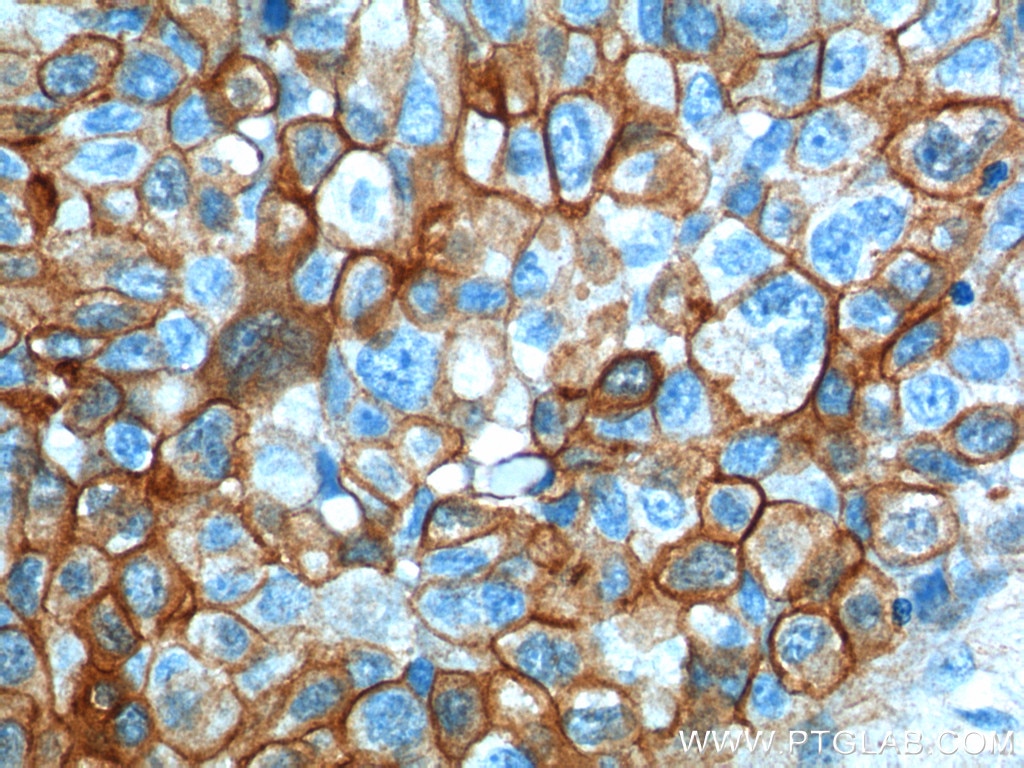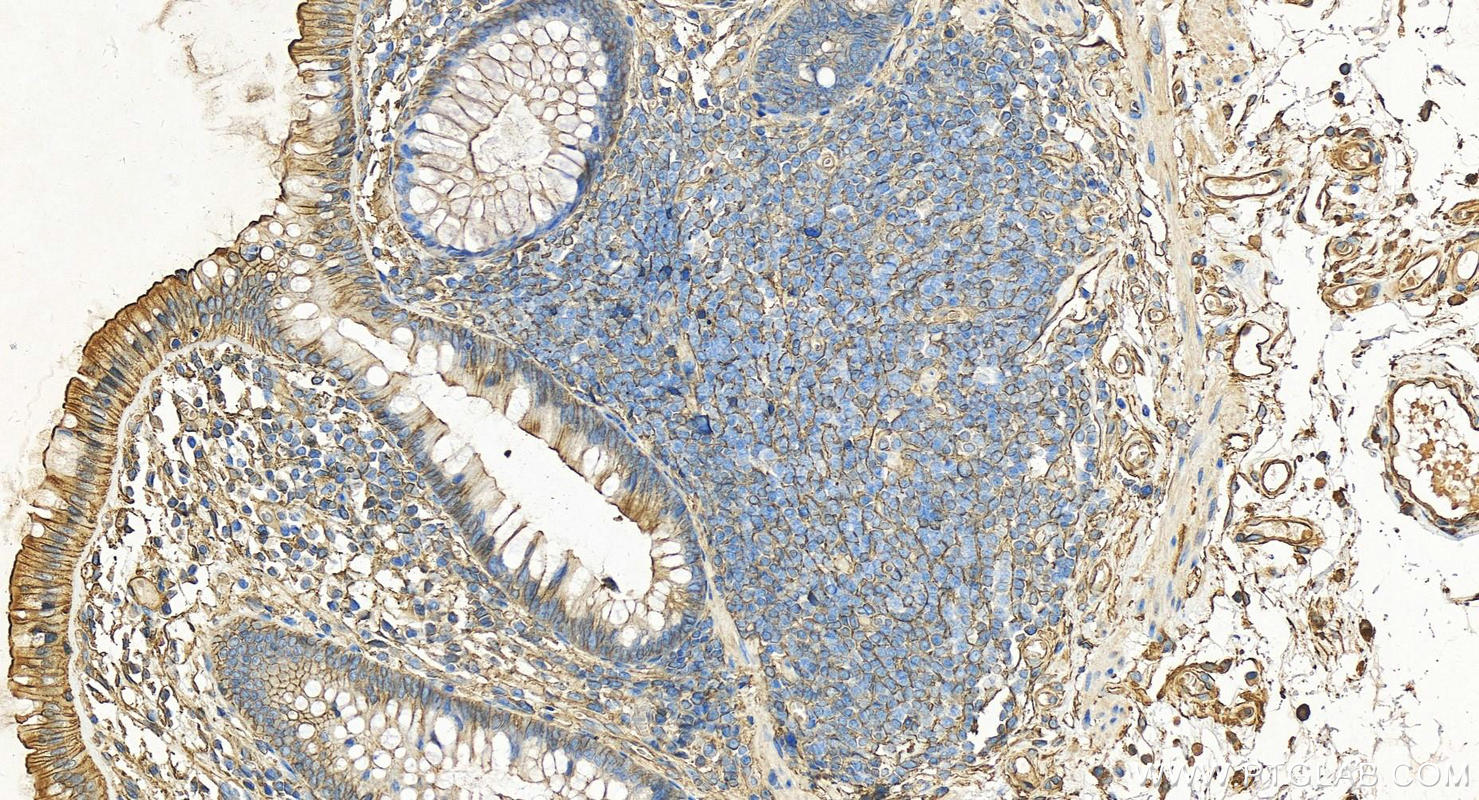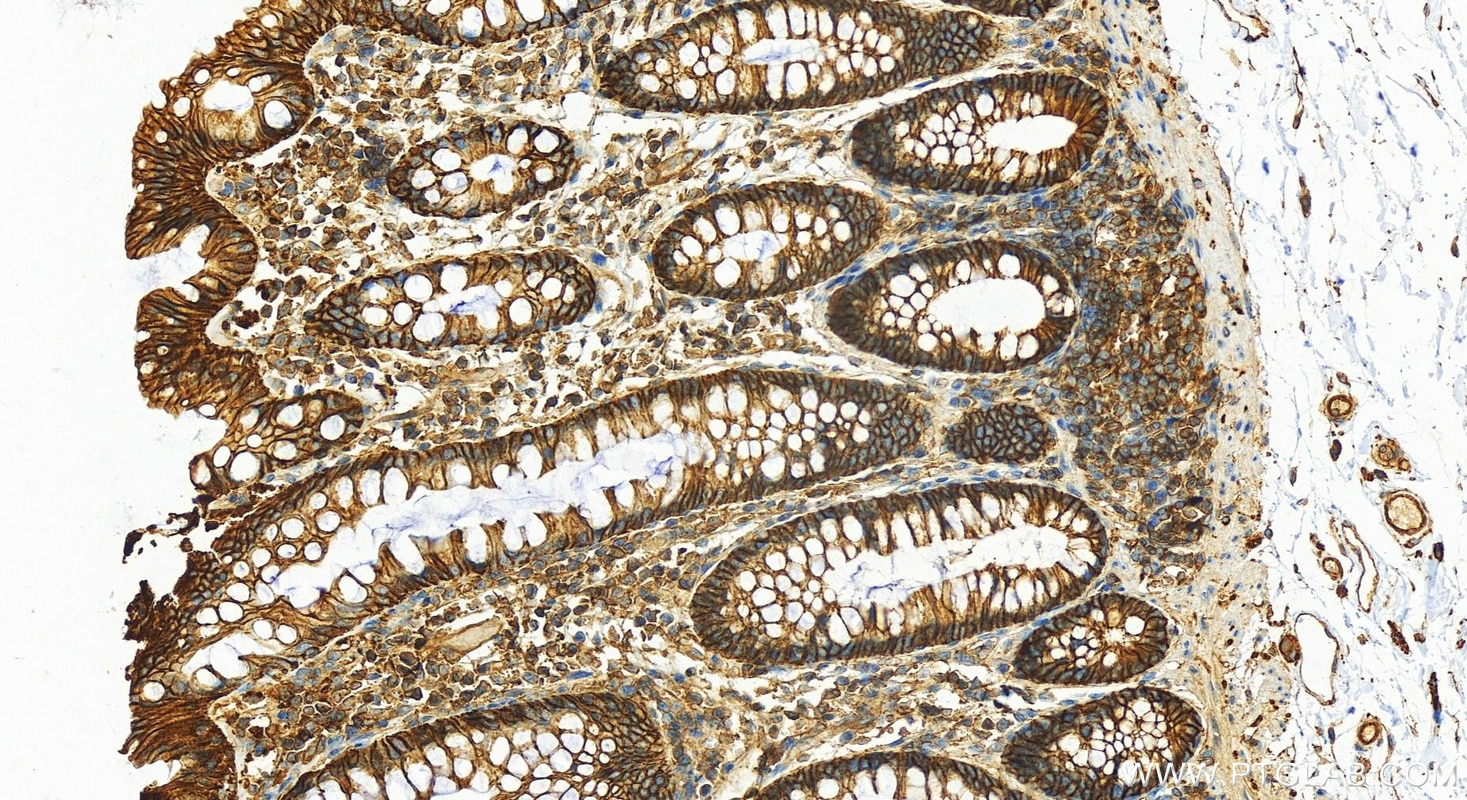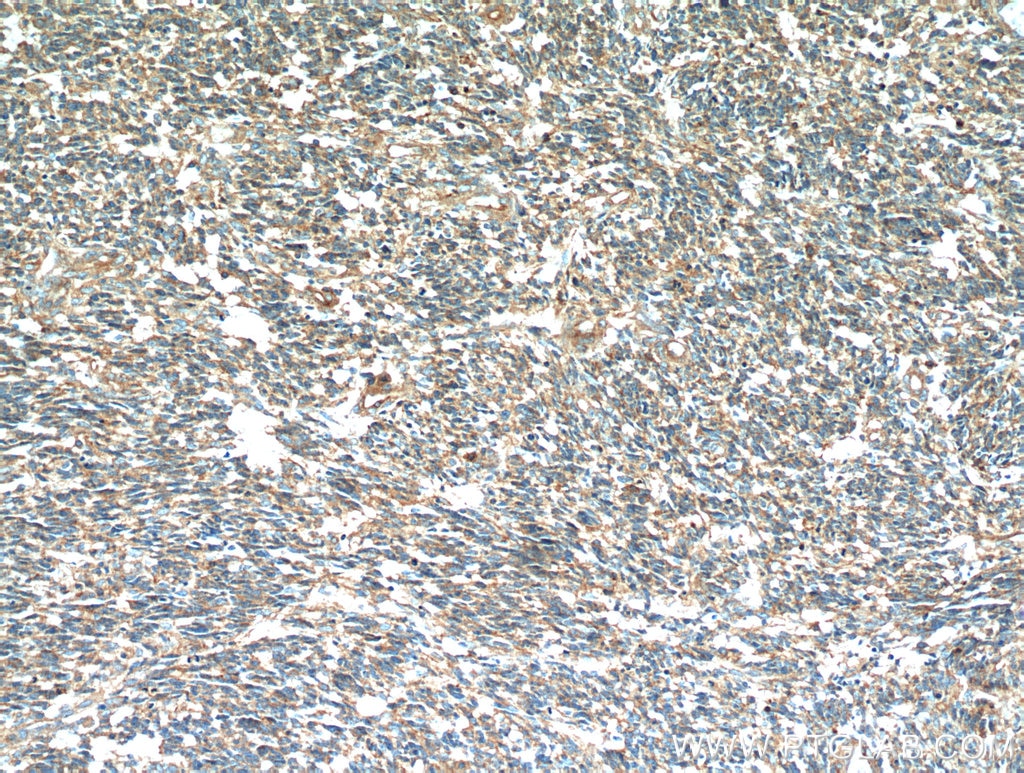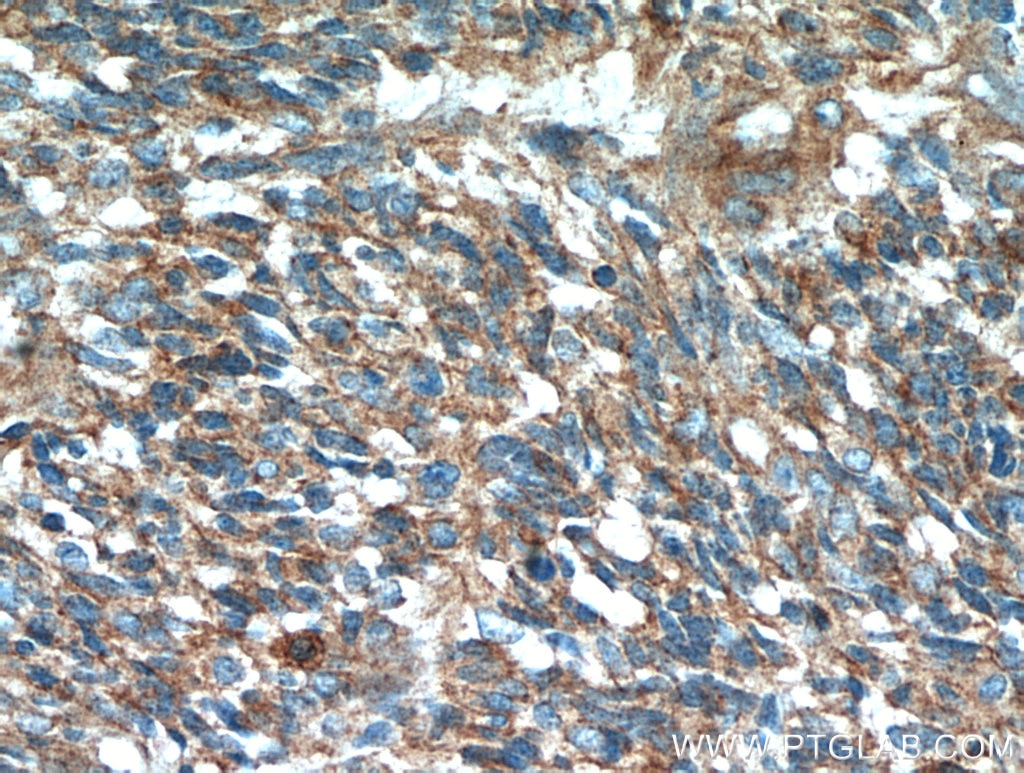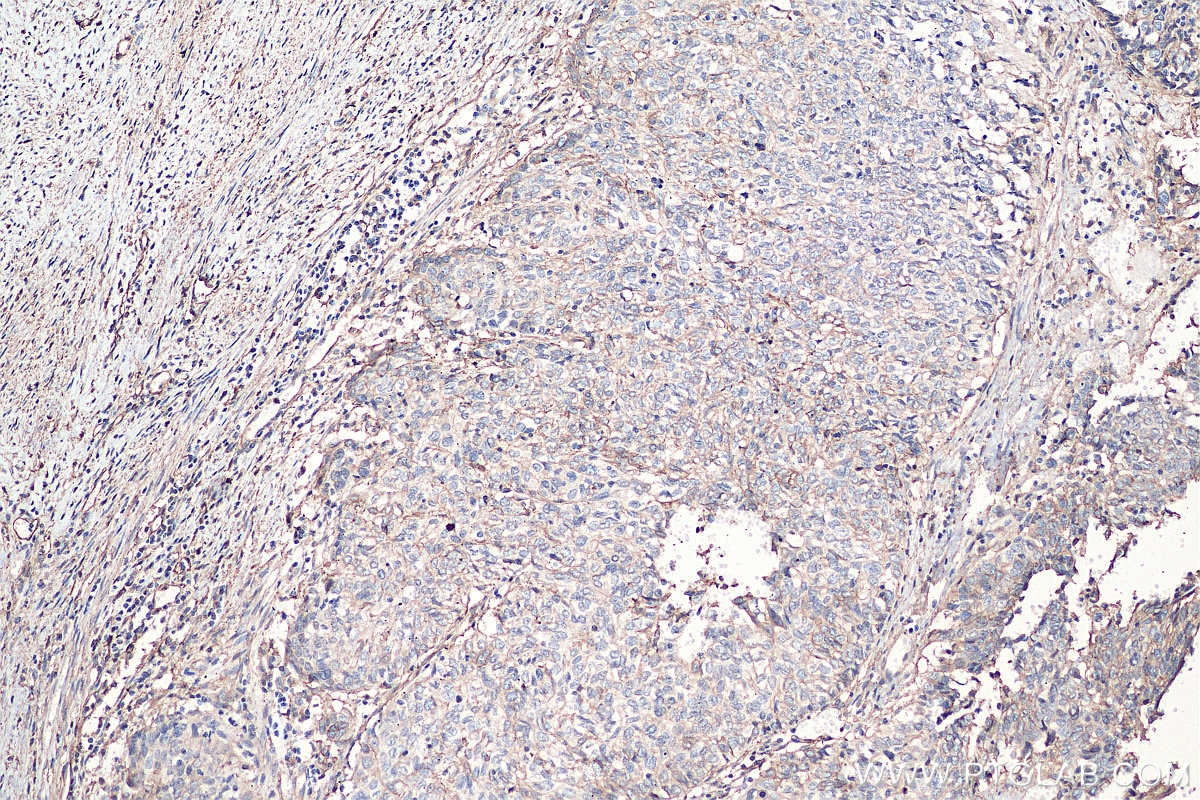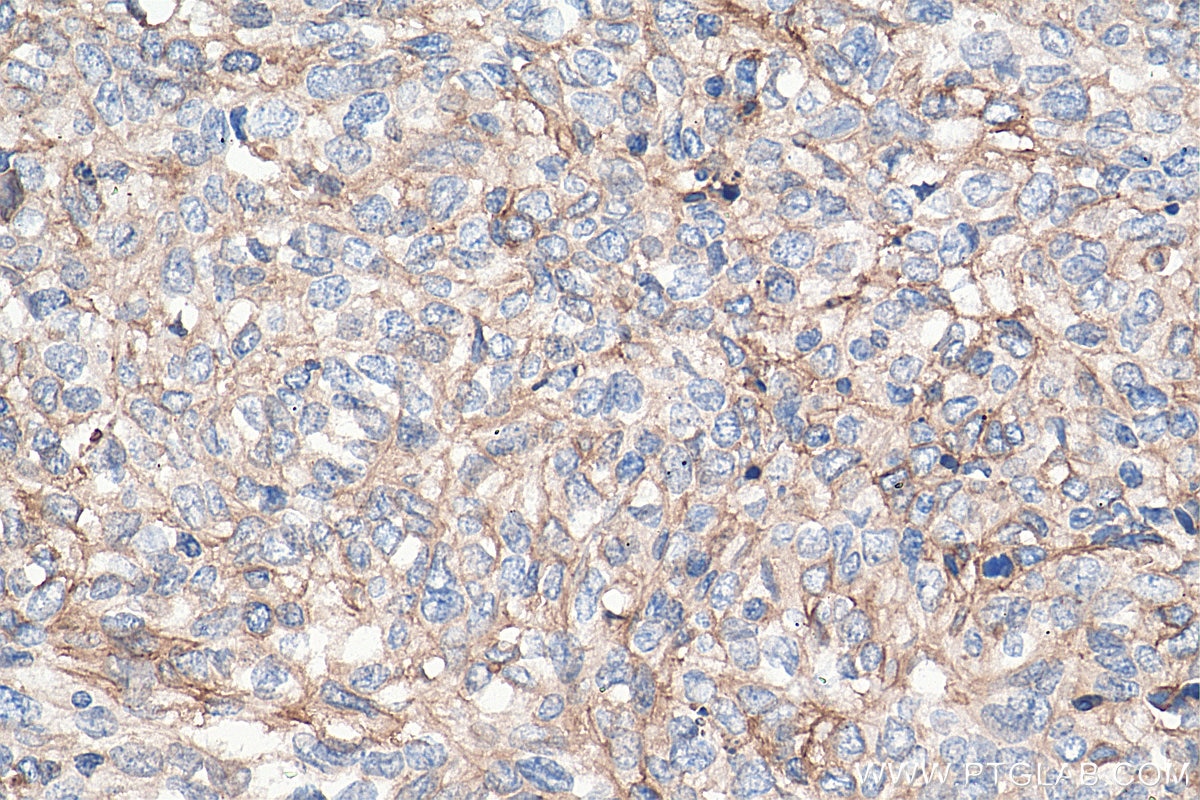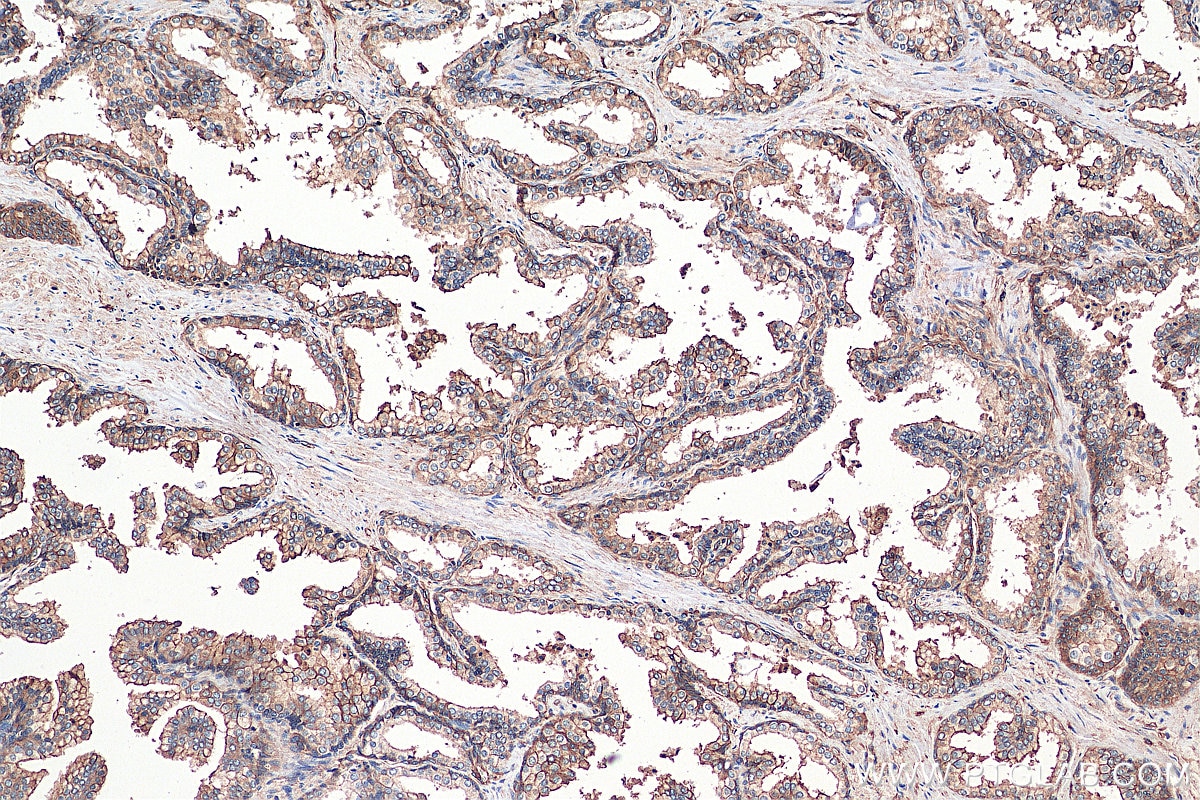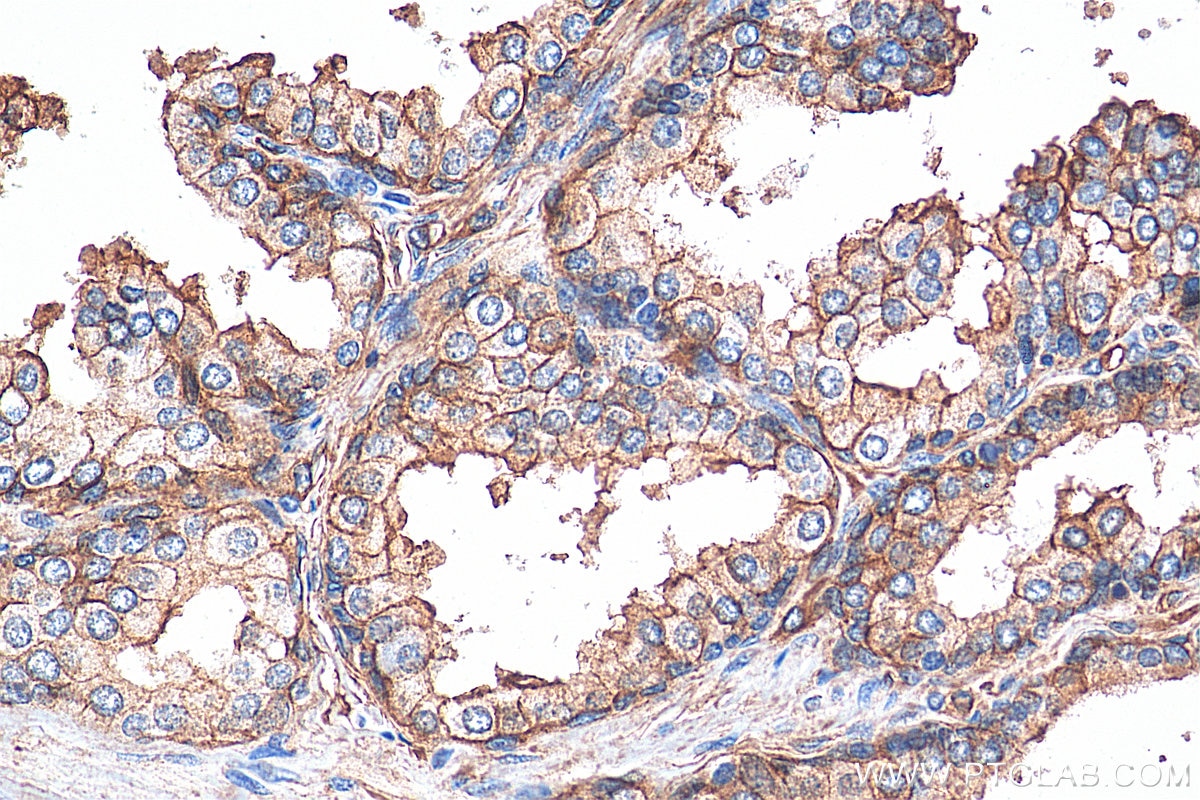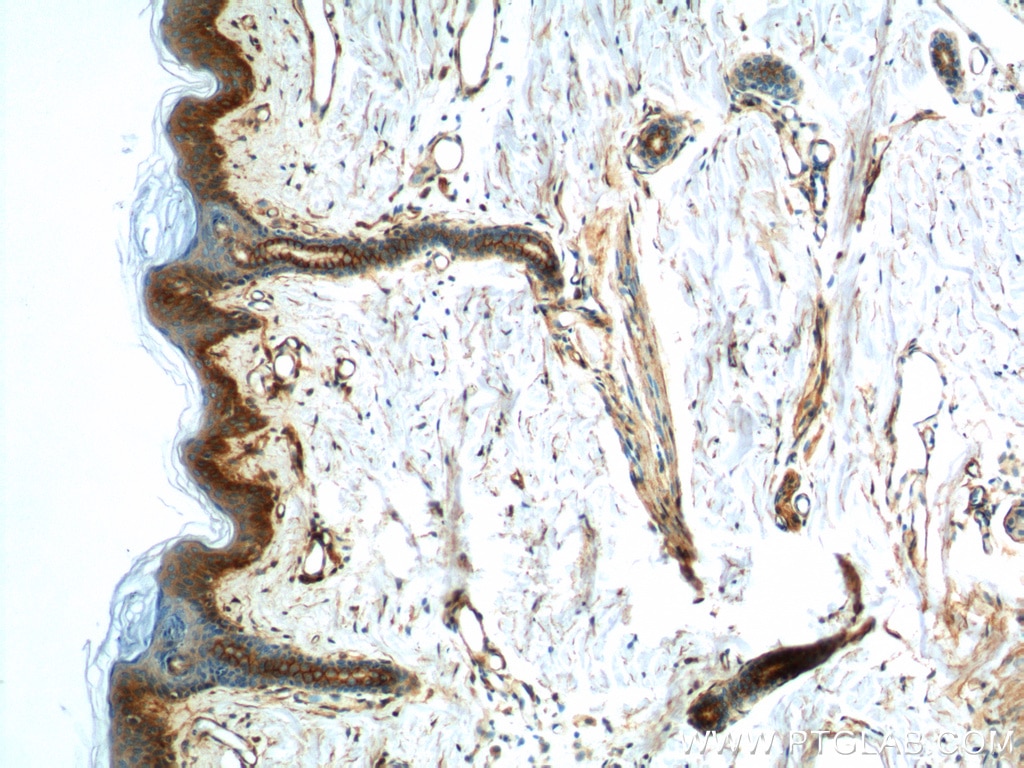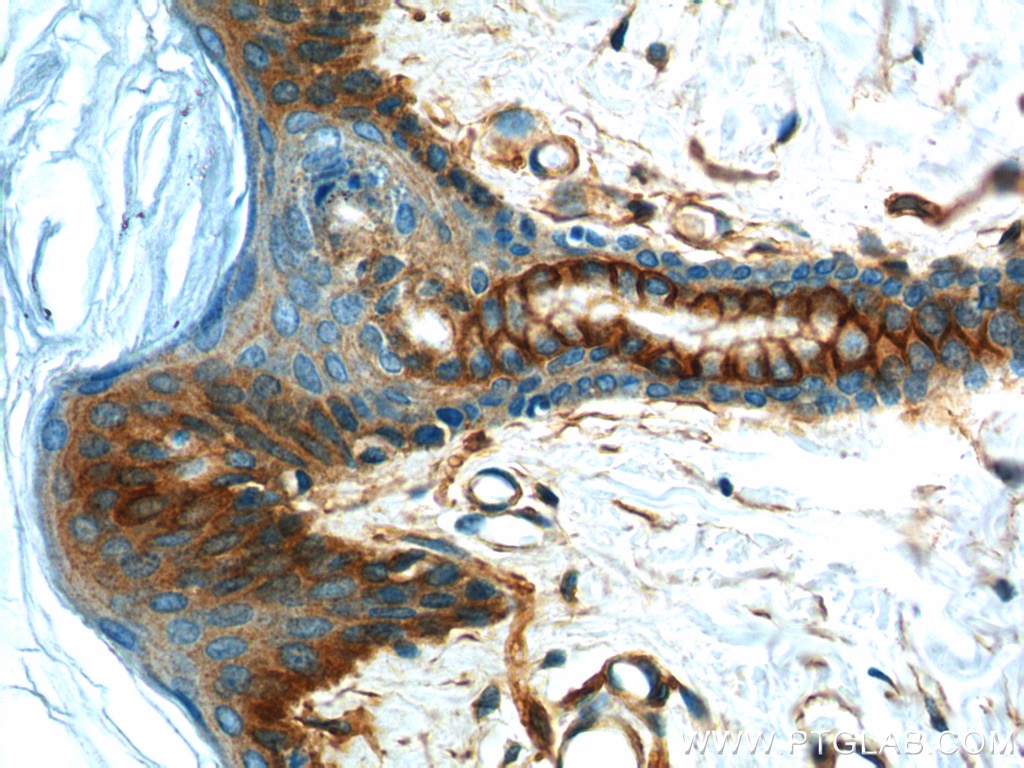- Featured Product
- KD/KO Validated
S100A10 Polyklonaler Antikörper
S100A10 Polyklonal Antikörper für WB, IHC, IF/ICC, ELISA
Wirt / Isotyp
Kaninchen / IgG
Getestete Reaktivität
human und mehr (2)
Anwendung
WB, IHC, IF/ICC, FC, IP, ELISA
Konjugation
Unkonjugiert
Kat-Nr. : 11250-1-AP
Synonyme
Geprüfte Anwendungen
| Erfolgreiche Detektion in WB | A431-Zellen, HaCaT-Zellen, HeLa-Zellen, HT-29-Zellen, humanes Lungengewebe |
| Erfolgreiche Detektion in IHC | humanes Kolongewebe, humanes Zervixkarzinomgewebe, humanes Gliomgewebe, humanes Lungenkarzinomgewebe, humanes Pankreaskarzinomgewebe, humanes Prostatahyperplasie-Gewebe, humanes Hautgewebe Hinweis: Antigendemaskierung mit TE-Puffer pH 9,0 empfohlen. (*) Wahlweise kann die Antigendemaskierung auch mit Citratpuffer pH 6,0 erfolgen. |
| Erfolgreiche Detektion in IF/ICC | HepG2-Zellen, HeLa-Zellen, U2OS-Zellen |
Empfohlene Verdünnung
| Anwendung | Verdünnung |
|---|---|
| Western Blot (WB) | WB : 1:500-1:2000 |
| Immunhistochemie (IHC) | IHC : 1:50-1:500 |
| Immunfluoreszenz (IF)/ICC | IF/ICC : 1:200-1:800 |
| It is recommended that this reagent should be titrated in each testing system to obtain optimal results. | |
| Sample-dependent, check data in validation data gallery | |
Veröffentlichte Anwendungen
| KD/KO | See 6 publications below |
| WB | See 43 publications below |
| IHC | See 8 publications below |
| IF | See 36 publications below |
| IP | See 3 publications below |
| ELISA | See 1 publications below |
| FC | See 1 publications below |
Produktinformation
11250-1-AP bindet in WB, IHC, IF/ICC, FC, IP, ELISA S100A10 und zeigt Reaktivität mit human
| Getestete Reaktivität | human |
| In Publikationen genannte Reaktivität | human, Maus, Ratte |
| Wirt / Isotyp | Kaninchen / IgG |
| Klonalität | Polyklonal |
| Typ | Antikörper |
| Immunogen | S100A10 fusion protein Ag1779 |
| Vollständiger Name | S100 calcium binding protein A10 |
| Berechnetes Molekulargewicht | 11 kDa |
| Beobachtetes Molekulargewicht | 11 kDa |
| GenBank-Zugangsnummer | BC015973 |
| Gene symbol | S100A10 |
| Gene ID (NCBI) | 6281 |
| Konjugation | Unkonjugiert |
| Form | Liquid |
| Reinigungsmethode | Antigen-Affinitätsreinigung |
| Lagerungspuffer | PBS with 0.02% sodium azide and 50% glycerol |
| Lagerungsbedingungen | Bei -20°C lagern. Nach dem Versand ein Jahr lang stabil Aliquotieren ist bei -20oC Lagerung nicht notwendig. 20ul Größen enthalten 0,1% BSA. |
Hintergrundinformationen
S100A10, also known as p11, is a member of the S100 family of small, EF hand containing dimeric proteins. S100 proteins are localized in the cytoplasm and/or nucleus of a wide range of cells, and involved in the regulation of a number of cellular processes such as cell cycle progression and differentiation. S100A10 is present on the surface of endothelial and other cells in a heterotetrameric complex with another Ca(2+)-binding protein, annexin II. S100A10 may function in exocytosis and endocytosis.
Protokolle
| PRODUKTSPEZIFISCHE PROTOKOLLE | |
|---|---|
| WB protocol for S100A10 antibody 11250-1-AP | Protokoll herunterladen |
| IHC protocol for S100A10 antibody 11250-1-AP | Protokoll herunterladenl |
| IF protocol for S100A10 antibody 11250-1-AP | Protokoll herunterladen |
| STANDARD-PROTOKOLLE | |
|---|---|
| Klicken Sie hier, um unsere Standardprotokolle anzuzeigen |
Publikationen
| Species | Application | Title |
|---|---|---|
Matrix Biol Antibodies and methods for immunohistochemistry of extracellular matrix proteins. | ||
Cell Mol Immunol Essential roles of S100A10 in Toll-like receptor signaling and immunity to infection. | ||
Int J Biol Macromol Astrocyte-conditional knockout of MOB2 inhibits the phenotypic conversion of reactive astrocytes from A1 to A2 following spinal cord injury in mice | ||
Acta Pharmacol Sin VEGFD/VEGFR3 signaling contributes to the dysfunction of the astrocyte IL-3/microglia IL-3Rα cross-talk and drives neuroinflammation in mouse ischemic stroke | ||
JCI Insight Fabry disease Schwann cells release p11 to induce sensory neuron hyperactivity | ||
Phytomedicine Withaferin A protects against epilepsy by promoting LCN2-mediated astrocyte polarization to stopping neuronal ferroptosis |
